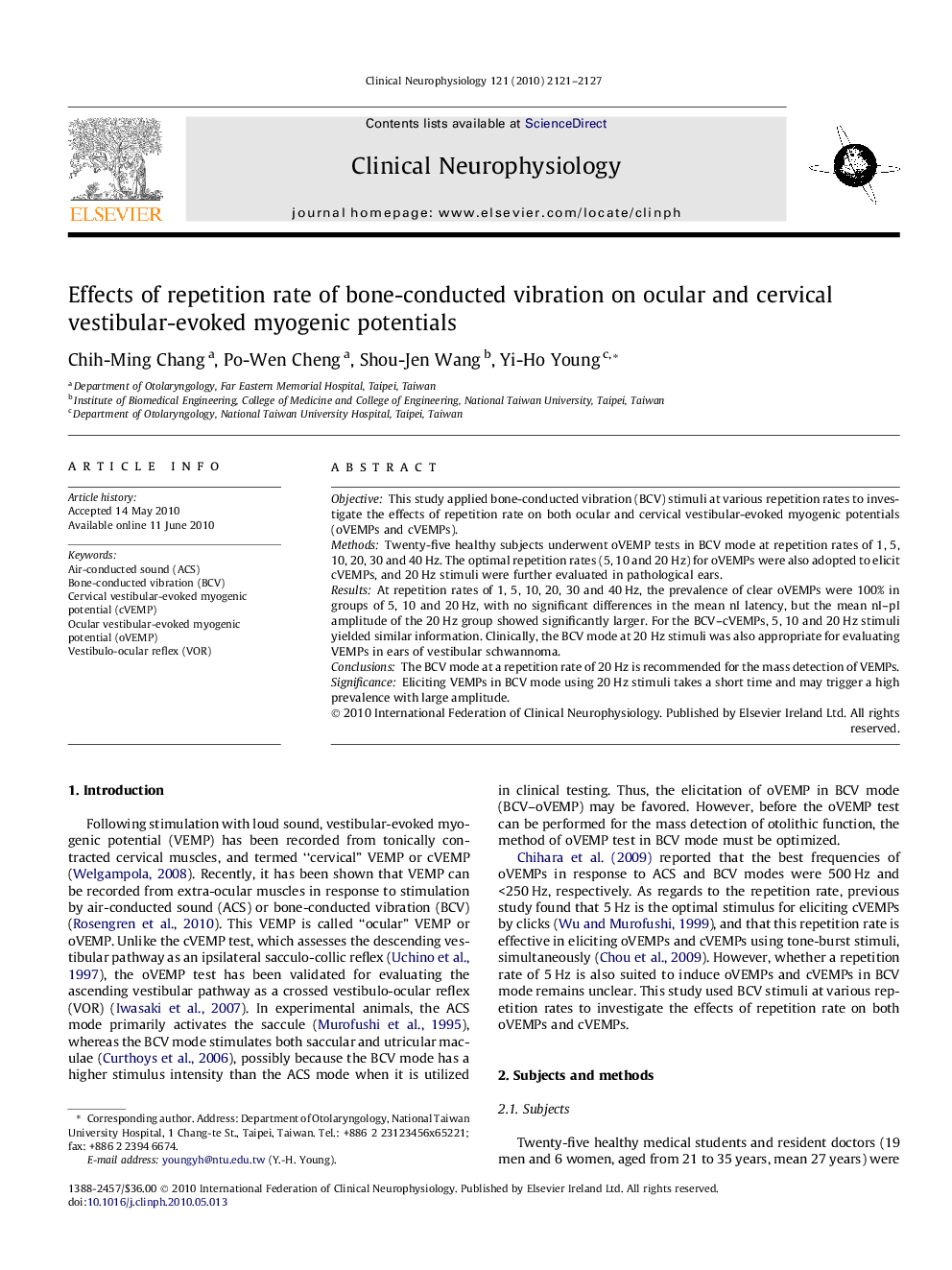| Article ID | Journal | Published Year | Pages | File Type |
|---|---|---|---|---|
| 3044439 | Clinical Neurophysiology | 2010 | 7 Pages |
ObjectiveThis study applied bone-conducted vibration (BCV) stimuli at various repetition rates to investigate the effects of repetition rate on both ocular and cervical vestibular-evoked myogenic potentials (oVEMPs and cVEMPs).MethodsTwenty-five healthy subjects underwent oVEMP tests in BCV mode at repetition rates of 1, 5, 10, 20, 30 and 40 Hz. The optimal repetition rates (5, 10 and 20 Hz) for oVEMPs were also adopted to elicit cVEMPs, and 20 Hz stimuli were further evaluated in pathological ears.ResultsAt repetition rates of 1, 5, 10, 20, 30 and 40 Hz, the prevalence of clear oVEMPs were 100% in groups of 5, 10 and 20 Hz, with no significant differences in the mean nI latency, but the mean nI–pI amplitude of the 20 Hz group showed significantly larger. For the BCV–cVEMPs, 5, 10 and 20 Hz stimuli yielded similar information. Clinically, the BCV mode at 20 Hz stimuli was also appropriate for evaluating VEMPs in ears of vestibular schwannoma.ConclusionsThe BCV mode at a repetition rate of 20 Hz is recommended for the mass detection of VEMPs.SignificanceEliciting VEMPs in BCV mode using 20 Hz stimuli takes a short time and may trigger a high prevalence with large amplitude.
